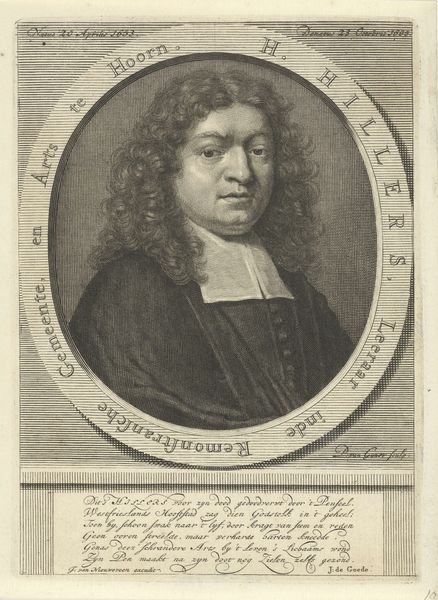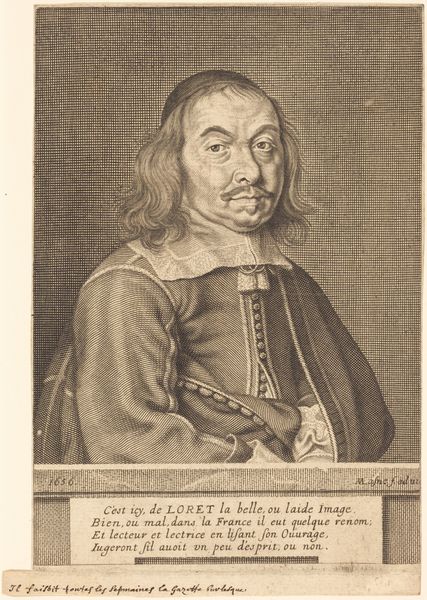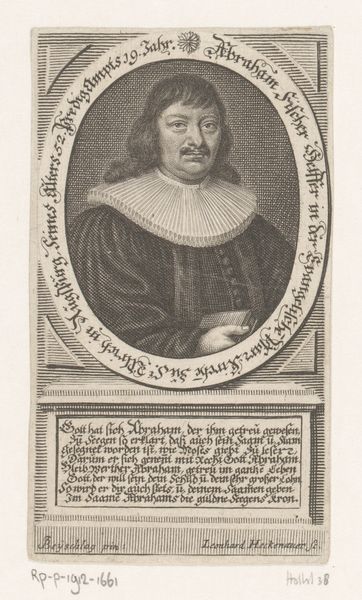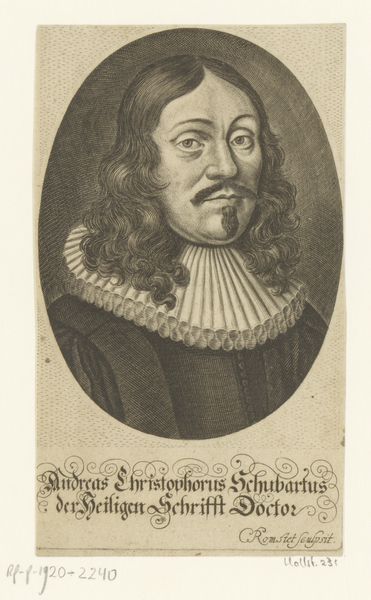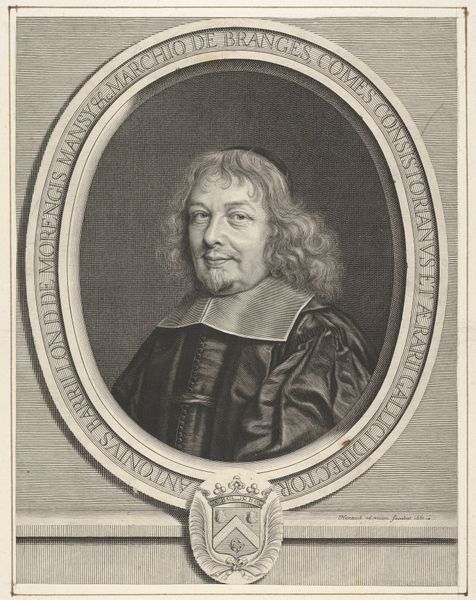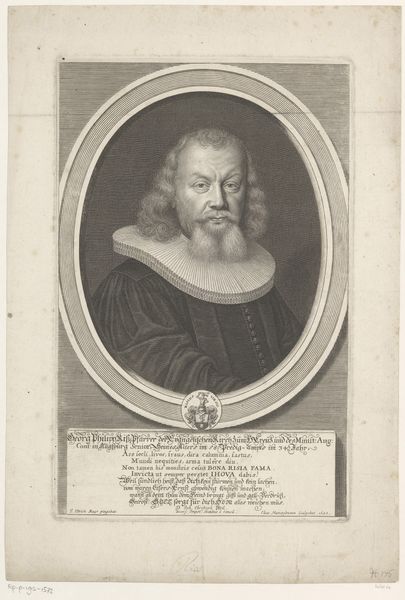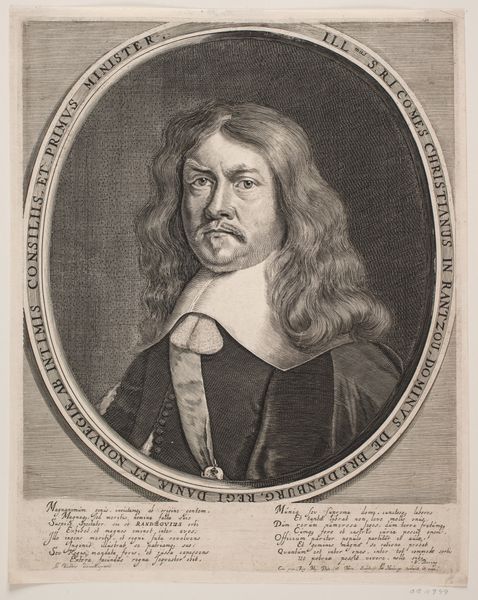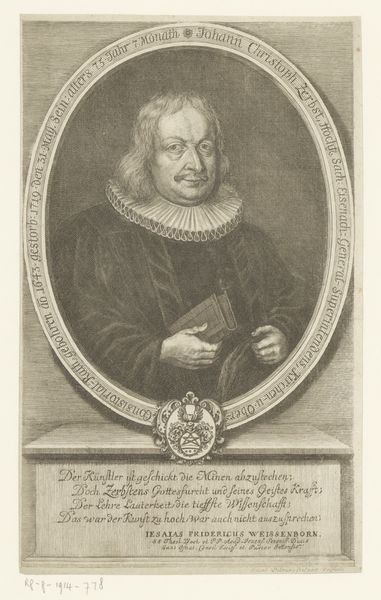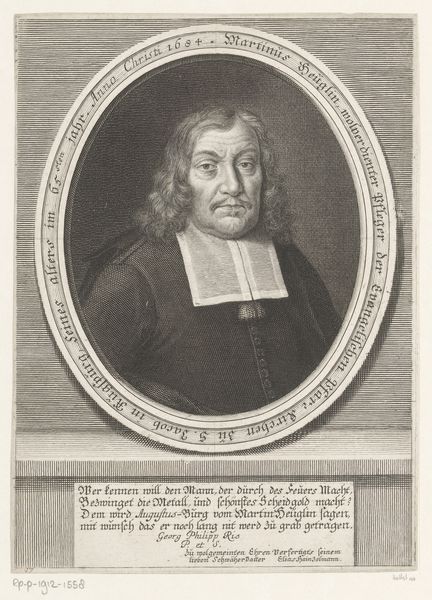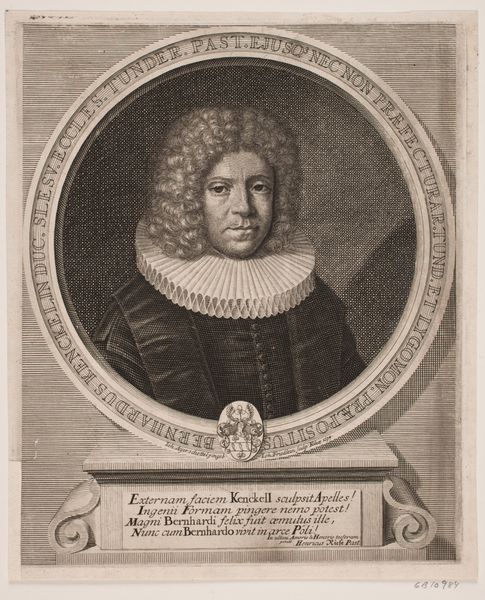
print, engraving
#
portrait
#
baroque
# print
#
old engraving style
#
portrait reference
#
history-painting
#
engraving
Dimensions: height 305 mm, width 206 mm
Copyright: Rijks Museum: Open Domain
Leonhard Heckenauer made this print of Johann Heinrich Horb sometime around 1700. It's an engraving, meaning that the design was incised into a metal plate. The artist would have used a tool called a burin to cut the lines, with the depth of the line determining the darkness of the printed mark. The dense network of lines creates a rich tonal range, capturing the textures of Horb’s clothing, the ruff around his neck, and even the fleshy quality of his face. Engraving demanded precision and control, a testament to Heckenauer’s skill. But consider, too, the social context: printmaking in this period was closely tied to the rise of capitalism. Prints were a relatively inexpensive way to disseminate images widely, serving as a form of mass media. This portrait, therefore, speaks to Horb’s status and the power of representation in a rapidly changing world. So, in appreciating this image, remember that it’s not just a likeness, but a product of its time.
Comments
No comments
Be the first to comment and join the conversation on the ultimate creative platform.


